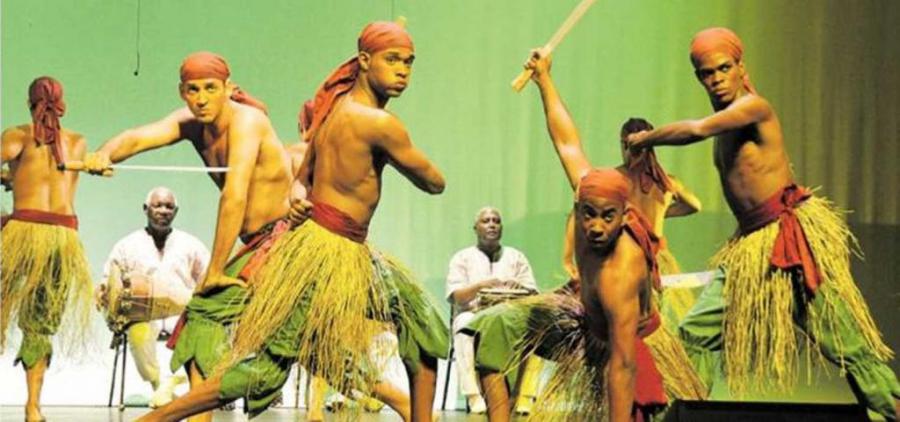The drums of the Yoruba- speaking Okun peoples of Nigeria struck familiar chords throughout an almost capacity foot tapping Napa rima Bowl auditorium on March 10 when the world famous El Conjunto Folklórico Nacional de Cuba opened the second instalment of its three-show visit.
By then, the well-travelled Cuban dance and music troupe had already left a Port - of- Spain audience in need of more, with a few Naparima Bowl patrons tes tifying to having made a return trip to view the show one last time. It is not known who else would have tailed them to the Shaw Park Complex in Tobago two evenings after.
The story of African slavery and the continued observance of ancient religious practices was told in dance and music - From the celebratory dance of Yema - ya, Mother of the Universe, to the iron resolve of the "cautivos” (captives) on their way to distant lands armed only with their songs and dances and a will to eventually win their freedom.
songs and dances and a will to eventually win their freedom.
Then there was the dance of Chango (Shango)-master of the drums and icon of male beauty, youth and virility. He was followed by Ayaba, Orisha mistress of the wind, and the Eshu dance tribute to Elegba, master of roads and crossroads.
Not all of it was unfamiliar to T&T audiences, some of whom are familiar with the Orisha worship of the Yoruba settlers in post - slavery T&T, and their enduring musical legacy.
The show was the product of a collaboration managed by Success Laventille Secondary School.
Its principal, Hamida Baksh, is convinced about the assets dance and the arts bring to the education table. “If it is that we want to look at how school activity could impact on the national community, this is the way to go,” she told T&T Guardian.
In fact, Baksh believes that her school’s management of the event is fully in keeping with the principles espoused by Prime Minister Dr Keith Rowley when he advocated for a school improvement initiative in Laventille that focused on parenting, improvements in literacy and numeracy, and development of school infrastructure.
“This kind of expansion of the school curriculum can capture all (these goals) one time,” she said.
Baksh said she hoped the arts projects being promoted by the school would “inspire the education sector into looking at what dance and the performing arts can do for students.”
Back on stage, the Cuban folk group was dancing and singing the evening away. Directed by Manolo Micler, the singers, drummers and dancers related stories of slavery and tradition- al Orisha worship. Then, after the intermission, the audience was treated to a variety of dance forms, from the Cuban Pilon to the Changui and the Danzon, which is heavily reminiscent of European ballroom dance.
Then came the Mambo fol- lowed by a series of popular Cuban dance music selections and a sampling of diverse Lat- in dance forms, including an amazing Carnival “dance of the flip flops” - more like the wood-
en sole “sapats” of old Trinidad -in a tap dancing style on the stage floor.
Judging from the extended applause, the 21 dancers that made the trip together with their six drummers and instrumentalists would have accomplished their mission of providing the audience with high-quality entertainment and a message that links dance and the educa- tion experience in a convincing manner.
With the filling of a long-standing vacancy for a dance/theatre arts teacher, Sue - cess Laventille has launched a performing arts programme that will eventually include a dance studio/classroom.
Baksh believes this is the start of much bigger things to come.

